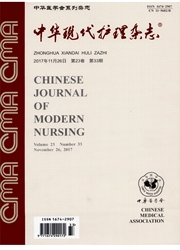

 中文摘要:
中文摘要:
目的 分析大前庭水管综合征(large vestibular aqueduct syndrome,LVAS)患者的发病原因,寻找最好的治疗方法及健康指导方法。方法 回顾1994年3月~2004年3月95例(190耳)双侧LVAS患者经过CT扫描,听力及前庭功能检查,诊断明确后所采取的相应治疗措施及健康指导。结果 95例LVAS患者就诊时听力均受损,其中36例无听力呈聋哑状态,2例儿童服镇静药,没有收集到听力资料。对患者先积极采用药物治疗,药物治疗3个月后听力无变化,建议患者佩带大功率助听器;佩带3个月后言语效果不满意,而且患者有接受人工耳蜗植入术的愿望,将其纳入耳蜗植入手术适应证。结论 对于LVAS患者,采取相应的治疗、护理及与之相适宜的健康指导措施,可延缓病情的发展,若明显听力下降,影响学习,可考虑采用耳蜗植入术。
 英文摘要:
英文摘要:
Objective To analyze the reasons that caused large vestibular aqueduct syndrome (LVAS) in order to explore effective therapy and nursing. Methods From March, 1994 to March, 2004, 95 patients (190 ears) were diagnosed as LVAS by CT scan, audition and vestibule function exam ination. Treatment and health education on them was reviewed. Results 95 patients with LVAS had audition hurt when they were admitted in hospital. Among them, 36 patients were deaf-and-dumb and 2 children' data were not collected because they took ataractic. Medicine therapy was used in the patients at first, then audiphone was suggested if their auditions were not improved. Finally, if the effect of audiphone was unsatisfactory and the patient wanted to receive cochlea implantation, cochlea implantation was applicable for them. Conclusions In patients with LVAS, related treatment, nursing and health education can leave the patients' conditions. If their auditions are decreased obviously, cochlea implantation should be considered.
 同期刊论文项目
同期刊论文项目
 同项目期刊论文
同项目期刊论文
 期刊信息
期刊信息
